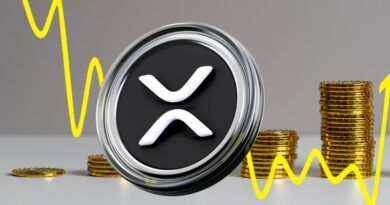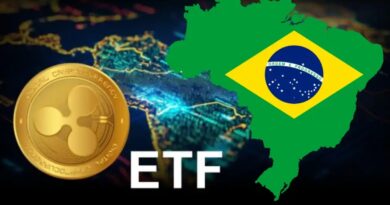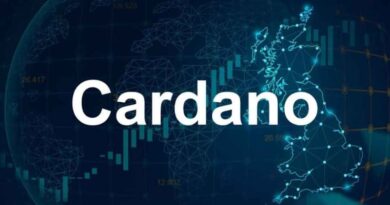Monero Surges 45% in 2025 as Ethereum Faces Struggles
Monero Outpaces Ethereum: What’s Behind the 45% Jump in 2025?
Cryptocurrency markets are unpredictable. One moment, popular coins like Ethereum dominate the headlines. The next, lesser-known assets like Monero steal the show. In early 2025, Monero (XMR) surprised many by climbing over 45% in value, while Ethereum (ETH) stumbled. What’s fueling this shift, and what does it mean for crypto investors like you?
Let’s break it down.
Why Is Monero Suddenly Gaining Ground?
Monero isn’t new to the crypto scene. It launched in 2014 with a focus on privacy and anonymity. Unlike Bitcoin and Ethereum, Monero transactions are fully private. That means no one can trace who sent what, where, or to whom. And in today’s digital world, privacy is becoming more valuable.
But what triggered Monero’s sharp rise in 2025?
Here are a few key reasons:
- Renewed interest in privacy coins: As governments increase crypto regulation, investors are turning to privacy-focused coins like Monero.
- Stable demand in dark markets and anonymous transactions: While controversial, Monero’s use in less traceable activity often shields it from broader market trends.
- Technical improvements and community growth: Monero developers rolled out updates that improved transaction efficiency and scalability, making it more appealing to long-term holders.
Why People Might Be Ditching Ethereum
Ethereum has long been seen as the king of smart contracts and decentralized apps (dApps). But in 2025, it’s facing headwinds.
Let’s look at what’s going wrong:
- High gas fees: Even with Ethereum 2.0 upgrades, network congestion is still driving up transaction costs.
- Scalability concerns: Some Ethereum-based platforms are slow and unreliable during peak usage times, frustrating users and dApp developers.
- Rising competition: Blockchains like Solana, Avalanche, and others are offering similar features with lower fees and faster speeds.
Ethereum isn’t failing. It’s just struggling to stay ahead in a market full of ambitious challengers.
What Makes Monero Different?
You might be wondering, “What makes Monero stand out from other cryptocurrencies?”
Here’s how it works:
- Private by default: Every Monero transaction is automatically shielded, unlike other coins where privacy needs to be “turned on.”
- Uses stealth addresses and ring signatures: These tools hide transaction details like sender, receiver, and amount.
- Untraceable and fungible: Each unit of XMR is the same as another. There’s no way to analyze past transactions or blacklist coins.
This privacy-first approach has helped Monero gain a solid following among users who prioritize discretion.
The Numbers Behind the Movement
Monero’s price was hovering around $150 at the end of 2024. By early 2025, it surged to over $220 — a 45% increase in just a few months. That’s no minor blip.
Compare that to Ethereum, which fell nearly 10% during the same time frame. With investor confidence shaking, Monero became an alternative many began to explore seriously.
Investors Are Paying Attention
The crypto market often reacts to news, but long-term moves usually reflect deeper sentiment changes. Investors are increasingly seeing value in coins that offer more than hype.
Monero’s rise could signal:
- A shift toward utility: Coins that solve specific problems, like untraceable payments, may grab more attention moving forward.
- Increased wariness of regulation: Governments around the world are cracking down on crypto activity, leading many to seek out privacy-centric alternatives.
- Security in uncertain times: As financial institutions face pressure and inflation remains a concern, private digital assets are gaining appeal.
Could This Be a Turning Point?
Think about the way internet users now care deeply about data protection and online privacy. That same awareness is sweeping through the crypto space.
Would you feel comfortable if every time you sent or received money, your transaction details were public? Probably not.
That’s one reason Monero might be just getting started.
What About Ethereum? Is It Still Worth Holding?
Ethereum still plays a critical role in the crypto ecosystem. It’s the backbone of popular dApps, NFTs, and DeFi platforms.
However, its network is experiencing growing pains.
And while upgrades like Ethereum 2.0 aim to fix many issues, adoption has been uneven. Some developers are migrating to rival blockchains offering faster and cheaper alternatives.
That doesn’t mean Ethereum is done — far from it. But investors are starting to explore other options for diversification. And Monero’s performance in 2025 has placed it high on that list.
Is Monero a Good Investment Right Now?
That depends on your goals.
If you care about privacy and want a coin that moves outside the market’s usual patterns, Monero might be worth looking into. But it’s important to weigh the risks.
- Regulatory suppression: Some countries are cracking down on privacy coins due to their anonymous nature.
- Lower liquidity: Monero doesn’t trade as frequently or in as large volumes as bigger coins like Ethereum or Bitcoin.
- Limited exchange access: Not all crypto platforms support XMR because of compliance concerns.
If you’re new to crypto or value simplicity, Ethereum may still feel more comfortable due to its wide presence.
How to Decide What’s Right for You
Ask yourself:
- Do I value privacy over convenience?
- Am I comfortable navigating less popular exchanges?
- Do I believe in the long-term utility of anonymous transactions?
Answering these questions can help you better align your crypto choices with your personal values and investment strategy.
Final Thoughts
Monero’s 45% climb in 2025 isn’t just a lucky break. It reflects a growing interest in privacy and the realization that blockchain isn’t only about hype — it’s about solving real-world problems.
As Ethereum works through its challenges and Monero gains traction, the crypto landscape is becoming more diverse. For investors and users alike, that means more choices, but also more decisions.
So, what matters more to you — speed, popularity, or privacy?
Understanding your priorities can help you navigate this evolving digital world with confidence.








